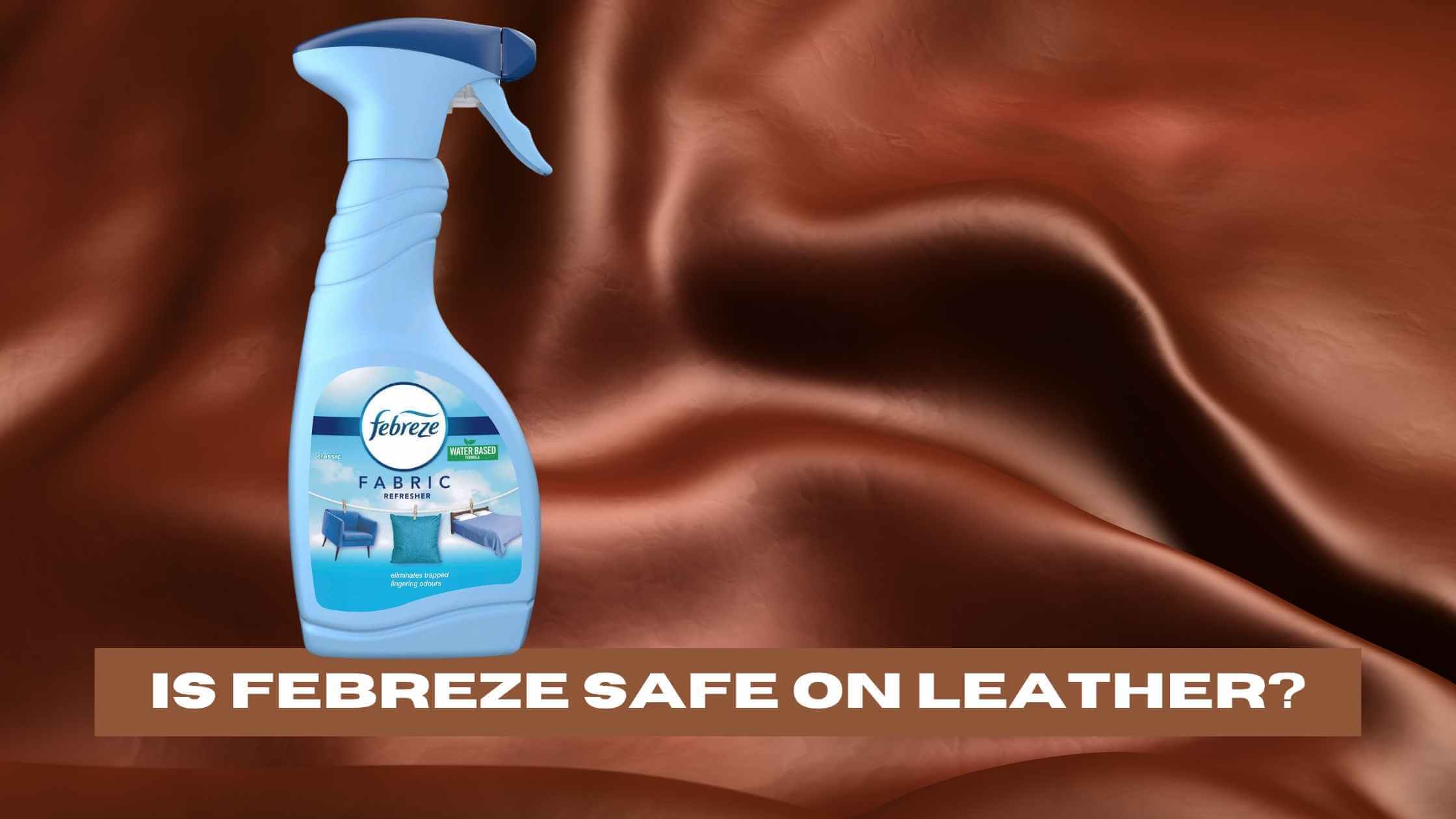Most of us are familiar with the magical wonders of Febreze. But is Febreze safe on leather? Is it good to use with your stinky leather insoles or tired leather couch? Take a look and see.
You can technically use Febreze with your leather safely, but it’s not recommended. Whether it’s a jacket, a pair of boots, or a couch, Febreze is inferior to other better leather deodorizers that are considered totally safe for your leather items.
If you insist on trying to do it, I’ve got some instructions below to help you minimize your risk and maximize the reward as much as possible.
Can Febreze be used on leather?
While I personally wouldn’t recommend using leather, as someone who loves leather a lot, you can technically use it. If you want to, remember that it’s specific for removing odors and musty smells. It isn’t going to clean or condition and shouldn’t be used with that in mind.
Can I spray Febreze on faux leather?
Faux leather is entirely different from authentic leather, of course. However, you might be surprised that you can’t use Febreze on authentic or faux leather! If you use it on faux leather, in particular, it’ll leave a residue. While you can effectively clean residue off of authentic leather (more on that later), it can be tough to remove it from faux leather.
Will Febreze remove bad odor from leather?
Technically, Febreze will remove a bad odor from leather. It’s an odor remover, after all. It can help you eliminate the odor, but it’s intended for other kinds of fabrics, so you won’t be able to find it effective for leather use.
How to apply Febreze on leather
If you’re set on trying Febreze to use as an odor eliminator for your leather, I recommend you take a look at these instructions and follow them carefully for the right results:
- Clean your leather with a damp cloth
- Apply Febreze to the damp cloth
- Rub lightly onto your leather
- Rinse with clean water
- Air-dry
- Condition as usual
The goal with these instructions is to go light with the Febreze. A little bit goes a long way, and you’ll want to stick to that normally! Too much can end up doing a lot of damage, making your leather jacket smell too much like Febreze. Instead, you’ll overpower your jacket’s natural leather smell for Febreze.
How do you get a Febreze smell out of leather?
If you’ve used too much by following the instructions above (no worries, we’ve all been there), you can effectively remove the smell by relying on the better odor-removal choices for leather. When it comes to something as intense as too much Febreze, your best choices will be baking soda and simply airing it out.
Sprinkling baking soda over your jacket and leaving it for 10 minutes before brushing it off thoroughly will help absorb most of the scent. Many leather professionals and lovers swear by baking soda for most of their leather deodorizing needs.
If you want to simply let nature take its course, the simplest option is just to air it out! Leather naturally will breathe and let go of odors and bad smells. So, one of the best things you can do for your leather is simply airing it out.
Pros and cons of using Febreze on leather
As you can guess from my explanation above, there are some serious advantages and disadvantages to consider when bringing these two together. Take a look:
Pros of Febreze
- Its a handy and available household product
- It works quickly to mask or eliminate smells
Cons of Febreze
- Can stain leather
- Can remove dye/paint
- Can dry out leather
Let’s just take a moment to think about what we’re trying to achieve. Leather works best with baking soda and other options (below). Febreze is a fantastic product for many other fabrics, just not leather. It doesn’t mean you can’t love it for every other household use! Just resist the urge to spritz your leather unless you feel you have no other choice.
What to use instead of Febreze
If I’ve convinced you that you should try some other choices for odor removal first, then you’ll find this list to be just what you need:
- Baking soda
- Vinegar and water
- Leather cleansers
- Airing out
I put baking soda first because I think it’s a powerful yet safe for your leather. Vinegar and water can be an excellent choice for those odors that are a bit stronger and saturated deep into the leather.
Don’t underestimate the power of basic leather cleaning with your purpose-designed cleaners and conditioners. They’re wonderful at getting your leather back to its best self!
Airing it out after all of these options (or instead of them) is a great choice to give your leather its best shot!
Is Febreze Fabric Refresher safe for my leather?
It’s so tempting to grab that fabric-designed bottle of Febreze, right? I mean, it’s meant for fabric! But just remember to look at the Febreze label details; it says right on it that it’s not intended for leather, silk, or other sensitive materials.
While this is a common household choice, and with good reason, Febreze is not your best choice for leather deodorizing. While it can technically be safe to use, you’ll find that most leather experts, lovers, and even the Febreze brand itself warn against it.
Rely on safer options such as baking soda, vinegar, or some fresh air to help naturally care for the problem. If you decide to use Febreze, know how to do it correctly!
Do you know someone standing at the ready with their Febreze bottle and leather shoes? Share this with them to save them the frustrating results!

